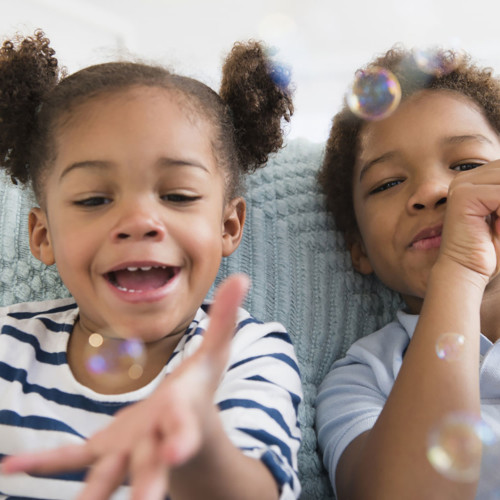Throughout 2016, the Bainum Family Foundation’s Birth-to-Three Policy Alliance meetings have served as a learning forum to ground all partners in the critical issues surrounding our work in the District of Columbia’s Wards 7 and 8. Past meetings have examined racial equity in local and national policy decisions and the complex challenge of system building.
Our most recent meeting on October 5 featured a guest speaker from one of the nation’s leading research centers on brain development. Sarah Roseberry Lytle, PhD, is Director of Outreach and Education at the Institute for Learning & Brain Sciences (I-LABS) at the University of Washington in Seattle.
Dr. Lytle provided an overview of how the brain develops in the first 2,000 days of a child’s life (birth to age 5) and explained how the important wiring takes place long before adults can see evidence of it.
She also described what constitutes “high-quality interaction” — the kind that best promotes learning in infants and toddlers. The most effective early learning experiences feature:
- Live interaction — Young children need direct human interaction to learn. I-LABS research found no evidence of infant learning from passive means such as viewing a DVD on TV or listening to an audio recording. Interestingly, a live video chat with an adult that involved back-and-forth interaction proved as effective as in-person interaction for toddlers.
- Infant-directed speech — The quality of the language used with a child matters deeply. Effective infant-directed speech uses correct sentences and real words, but at a slower pace with exaggerated pauses between sentences. It uses repetition and a higher-pitched, singsong tone to help the child learn sounds and then words.
- Emotions — I-LABS research shows that children are quick to understand and respond to adult emotions, even adapting their behavior based on what they observe. Adults must be aware of the emotions they are intentionally or unintentionally conveying.
- Eye gaze — Children learn quickly that an adult’s eye gaze is directing their attention to a “hot spot” for learning. They learn words from eye gaze and also absorb social cues that help them learn about the world around them.
- Imitation — Imitation is a powerful learning tool that establishes a connection with others. Children will imitate both the behaviors and speech of adults.
- Back-and-forth interactions — Turn-taking is critical. It encourages responsiveness in children.
- Scaffolding — Scaffolding refers to the process of asking questions to push the edges of children’s development. It makes direct connections to children’s prior experiences to support learning.
I-LABS has created a library of powerful training modules that can be used by parents, early educators and others to learn more about and support effective brain development. To view the modules, register for a free account with your name and email address on the I-LABS website.
Learn more about how the Birth-to-Three Policy Alliance is working to improve the odds for infants and toddlers in the District.





